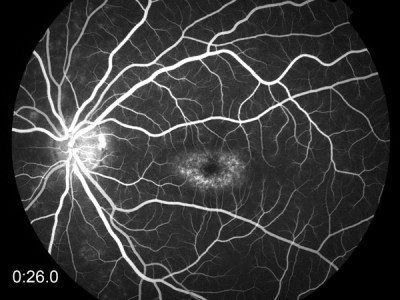Stargardt's Disease
MicroAcupuncture for Stargardt’s Disease in Bentonville, Arkansas
MicroAcupuncture treatment for Stargardt’s Disease shows great promise for those suffering vision loss from this early onset macular degeneration. Stargardt’s disease behaves very much like AMD, and responds to acupuncture treatment similarly, although it is generally not complicated by neovascularization.
Stargardt’s Disease, also known as juvenile macular dystrophy is the most common form or inherited juvenile macular degeneration. The majority of people suffering from Stargardt’s disease are diagnosed before the age of twenty. By the age of fifty, most patients will be legally blind, having a visual acuity of 20/200 or less.
Much like AMD, Symptoms of vision loss from Stargardt’s disease can include blurry or distorted vision, inability to see in low lighting and difficulty recognizing familiar faces. In late stages of Stargardt’s, color vision also may be lost.
Stargardt’s disease is diagnosed by the presence of small, yellowish spots of deteriorating tissue (drusen) sloughed off from the outer covering of the retina (retinal pigment epithelium).
Vision loss from Stargardt’s generally begins to show up within the first 20 years of life, more often in early childhood. But it’s difficult to pinpoint exactly when retinal damage will occur or how fast it will progress, because variations can occur even among family members with similar inherited tendencies.
Stargardt’s accounts for 7% of all retinal dystrophies. It usually presents in childhood at about six years old to early adulthood and generally occurs bilaterally. There is also progressive color blindness. Once vision drops below 20/40 (or 6/12 meters), progression is rapid and the visual prognosis is poor. This disorder affects approximately one in 10,000 people in the U.S.
Stargardt’s is an inherited disease passed along to children when both parents carry mutations of a gene associated with vitamin A processing in the eye. Parents can carry recessive genetic traits responsible for Stargardt’s, even though they themselves may not have the disease. Researchers have found that about 5 percent of the human population carry gene mutations causing inherited retinal diseases such as Stargardt’s, rod/cone dystrophy and retinitis pigmentosa.
About Fundus Flavimaculatus
This is considered a variant of Stargardt’s disease as the same gene is being affected. However, this condition presents later and the macula may be spared, but is characterized by more general retinal degeneration. Presentation occurs in adulthood: may be discovered by chance or the patient may present with central vision degeneration. Deterioration in color vision is often not noticed by the patient until later on. Peripheral and night vision are usually unaffected. Prognosis tends to be better than in Stargardt’s disease. Patients may remain asymptomatic for many years.
1501 SE Walton Blvd. Suite 201Bentonville, AR 72712
Call Us
Toll Free:
1-800-824-6368
Local:
479-250-3659
© 2024
Arkansas Acupuncture Center | Powered by Flypaper | All Rights Reserved | Privacy Policy



